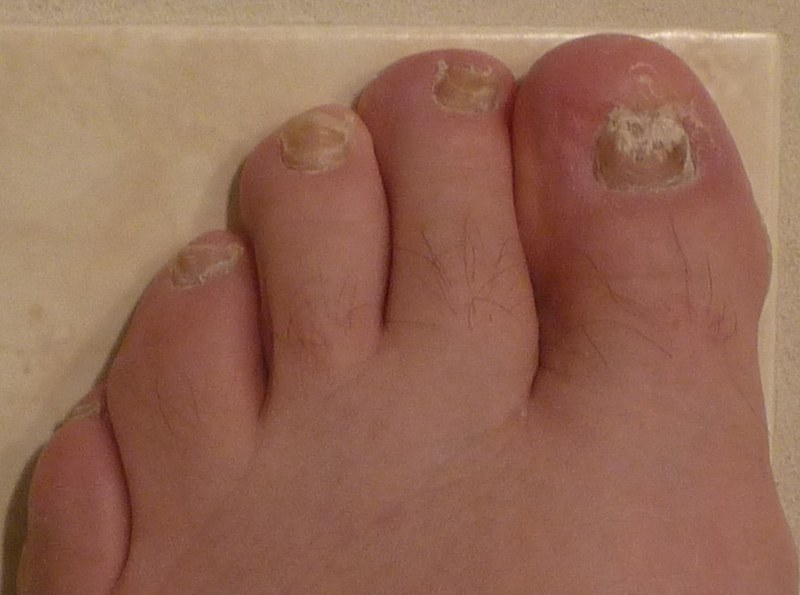Are you dealing with discolored, brittle, or thickened toenails? You might be experiencing a condition known as fungal nails. While common, fungal nails can be more than just a cosmetic annoyance. They may lead to discomfort or even more serious complications if left untreated.
How Do Fungal Nails Develop?
Fungal nails, or onychomycosis, are caused by fungal infections that invade the nail bed, nail plate, or surrounding skin tissue. The fungi responsible thrive in warm and moist environments, making communal areas like gym showers, swimming pools, and locker rooms common sources of exposure.
The condition often develops gradually, starting as a small white or yellow spot on the nail. Over time, the infection may spread, and other symptoms can appear, including:
- Thickened nails
- Brittle or crumbly texture
- Discoloration (yellow, white, or brown)
- Distorted shape
- A foul odor in severe cases
- Separation of the nail from the nail bed (onycholysis)
Certain factors can increase the risk of fungal nail infections:
- Poor hygiene: Walking barefoot in communal spaces or sharing nail tools can increase exposure to fungi.
- Sweaty or damp feet: Repeatedly wearing the same socks or shoes without cleaning them can create ideal conditions for fungi.
- Weakened immune system: Individuals with conditions such as diabetes or circulatory issues are more susceptible to infections.
Understanding how fungal nails develop is the first step toward prevention and treatment. But how do you know for sure if you have a fungal nail infection? That brings us to diagnosis.
How Are Fungal Nails Diagnosed?
If you notice any changes in the appearance or texture of your toenails, get a proper diagnosis. Many conditions, such as psoriasis or trauma to the nail, can mimic fungal nail symptoms, so consulting a podiatrist is key to identifying the root cause. During a diagnosis, the podiatrist will first perform a visual inspection of the affected nail or nails. They will assess discoloration, thickness, and texture, while also evaluating for other potential causes of abnormalities, such as injury or skin conditions.
To confirm the diagnosis, the podiatrist may take a small sample of the affected nail or surrounding tissue for lab testing. This test helps identify the specific type of fungi causing the infection and rules out other conditions. An accurate diagnosis determines the most effective treatment strategy for your nail health..
How Are Fungal Nails Treated?
Fungal nail infections can be frustrating to treat, but with the right approach and patience, you can conquer them. The treatment options include both at-home care and professional medical interventions.
Topical Treatments
Topical antifungal medications, such as creams, gels, or nail lacquers, are often the first step in treatment. These are applied directly to the affected nail or surrounding skin. While they can be effective for mild infections, they typically require consistent application over several months to see noticeable results. Examples include ciclopirox or efinaconazole solutions.
Oral Antifungal Medications
For moderate to severe fungal nail infections, oral antifungal medications are commonly prescribed. These medications, such as terbinafine or itraconazole, work by targeting the infection from within. A typical course lasts several weeks, and they tend to be more effective because they reach the infection via the bloodstream. Oral antifungals may cause side effects and are not suitable for everyone, especially those with liver issues or certain medical conditions. Your podiatrist will weigh the benefits and risks before prescribing.
Nail Debridement
Physical debridement involves trimming and thinning the infected nail. This process allows topical treatments to penetrate more deeply and effectively target the fungus. Debridement is often performed by a podiatrist and may require multiple sessions for optimal results.
Laser Therapy
Laser treatment is a newer, non-invasive option for treating fungal nails. The laser targets fungal pathogens without damaging surrounding tissue. This approach is FDA-approved and has shown promising results, but it may be more costly compared to other treatments.
Removing the Nail
For severe or recurring infections, temporary or permanent nail removal may be recommended. If removed, the nail will either grow back slowly or, in some cases, not regrow at all.
At-Home Maintenance
Even during professional treatment, proper at-home care is key to preventing reinfection. Here are tips to follow:
- Keep nails trimmed and clean.
- Wear breathable, moisture-wicking socks.
- Disinfect shoes regularly with antifungal sprays or powders.
- Avoid walking barefoot in communal or damp spaces.
Remember that even effective treatments may require several months to fully eliminate the infection due to the slow growth rate of toenails.
Visit a Podiatrist for Options
If you’re dealing with fungal nails, the good news is that treatment options have advanced significantly. Even better, early intervention can significantly reduce recovery time and enhance effectiveness. Your podiatrist is your partner in foot health, offering expert diagnosis and access to professional-grade treatments. Request an appointment today and address the issue at its root.









